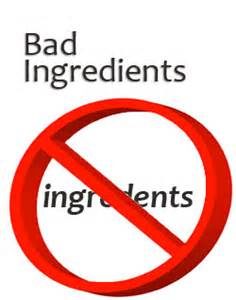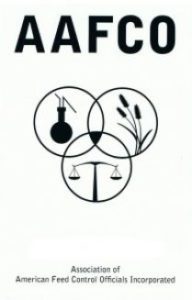Understanding Pet Food Labels–Part 3
Pet food labels–a final look
Our pets trust us to care for them and look out for their best interests. Without question we shower them with amazing toys, plush, snuggly beds, and health care when needed; but how often do we question what we feed them? Next to vaccines, diet is the second most important decision you will make for your pet. It has far-reaching consequences, many of which most pet parents pay little attention to. This is why learning to read pet food labels is so important. I hope the first two articles have been eye-opening! If you missed them you can read them here and here. Now we take a closer look at a few more categories, many of which may be the biggest shockers yet.
Food binders and emulsifiers
Have you ever thought about how they make gravy and keep the pet food and fats from separating? They use binders and emulsifiers, which are thickeners and are commonly found on the label as:
- Corn gluten–most likely made from GMO corn
- Wheat gluten
- Gums–including xanthan gum, guar gum, locust bean gum, cassia gum
- Soy lecithin–most likely made from GMO soybeans
- Carrageenan–made from seaweed but can be processed with chemicals
- Glyceryl monostearate–(may also contain the preservative BHT)
The family of “gums” are basically indigestible carbohydrates that may have inflammatory properties. Some may cause GI upset and slow down digestion. It may be terribly hard to avoid them in cat food unless you feed a raw or homemade diet. Wheat gluten is often used in large quantities to make “meatloaf” style chunks out of ground up meat sources, including by-products. The end product often times contains more wheat gluten than meat. You can learn more about wheat gluten pet food secrets in this article from The Truth About Pet Food. When you consider how these products are sourced and processed it makes sense that you’d want to avoid them.
Other additives
Animal digest is an additive that some manufacturers like to use as a protein source. The legal definition allows it to be sourced from dead, non-slaughtered, diseased, or even euthanized animals. There is no guarantee for pet parent to know if it came from a healthy slaughtered animal or not. You would do best to avoid it altogether. (The Truth About Pet Food)
Added flavors are another ingredient you may find on the label. When you see words like “natural flavors”, “liver flavor”, “added flavor”, “artificial flavor” this should be a warning sign. Pet food manufacturers use chemicals to enhance the palatability of the food. When you start to understand the ingredients they put in food it makes sense why they need to add “flavor.” Without them the food wouldn’t be very appealing or taste good to pets.
Colors and dyes are commonly used in lower quality, grocery store brand foods, especially kibble, to make the food different colors. These colors are designed to appeal to the pet parent; the cats don’t care about colors because they can’t see them. These dyes are linked to serious disease, including cancer. An article in The Truth About Pet Food stated findings from the CSPI (The Center for Science in the Public Interest) regarding the use of dyes in foods:
Of the common food dyes found in pet foods and treats, the CSPI summary states…
“Blue 2 cannot be considered safe given the statistically significant incidence of tumors, particularly brain gliomas, in male rats. It should not be used in foods.”
“Red 40, the most-widely used dye, may accelerate the appearance of immune-system tumors in mice. The dye causes hypersensitivity (allergy-like) reactions in a small number of consumers and might trigger hyperactivity in children. Considering the safety questions and its non-essentiality, Red 40 should be excluded from foods unless and until new tests clearly demonstrate its safety.”
“Yellow 5 was not carcinogenic in rats, but was not adequately tested in mice. It may be contaminated with several cancer-causing chemicals. In addition, Yellow 5 causes sometimes-severe hypersensitivity reactions in a small number of people and might trigger hyperactivity reactions in a small number of people and might trigger hyperactivity and other behavior effects in children. Posing some risks, while serving no nutritional or safety purpose, Yellow 5 should not be allowed in foods.”
“Yellow 6 caused adrenal tumors in animals, though that is disputed by industry and the FDA. It may be contaminated with cancer-causing chemicals and occasionally causes severe hypersensitivity reactions. Yellow 6 adds an unnecessary risk to the food supply.”
With these findings it’s no wonder food dyes should be avoided at all costs.
Preservatives
In order to preserve shelf life (of dry food) manufacturers must use preservatives; without them fats will go rancid. Natural antioxidants like Vitamin E, Vitamin C, citric acid and rosemary are your safer options. Actual fruits like blueberries, apples, and cranberries are sometimes used as sources of Vitamin C. Artificial preservatives are a completely different story. You’ll want to avoid the following as they are extremely toxic and cancer causing:
- BHA
- BHT
- Propyl Gallate
- Ethoxyquin
- Sodium nitrite/nitrate, and
- TBHQ
Prebiotics
One of the more recent ingredient trends that some pet food manufacturers are including in pet food is prebiotics. You may see them on the label as:
- fructo-oligosaccharides
- inlulin
- oligofructose
- beet pulp
- chicory root
- garlic
Prebiotics are undigestible, complex sugars that feed the microbiome in the gut. While they can be very beneficial in terms of improving the GI tract, they may not be right for every pet. In an article about fiber and prebiotics in pet food Dr. Karen Becker, DVM, explains why:
Marketing claims for prebiotics position them as feeding only friendly, healthy bacteria in the digestive tract. But research indicates this is not the case – prebiotics nourish unhealthy bacteria as well. If your pet has a very fit gut full of primarily healthy bacteria, prebiotics may be beneficial and probably won’t cause a problem.
But if your dog or cat has a GI condition such as inflammatory bowel disease (IBD), irritable bowel syndrome (IBS), dysbiosis (leaky gut), malabsorption, maldigestion, ‘sensitive stomach,’ or most importantly, SIBO (small intestinal bacterial overgrowth), prebiotics are not what you want to feed your pet’s compromised digestive tract.
Pets with yeasty guts have a significant worsening of their condition when fed prebiotics. Remember, prebiotics are complex sugars, and sugar feeds yeast.
Dr. Becker goes on to say that, “The most common type of prebiotic added to popular pet food formulas is beet pulp, a fibrous material found in sugar beets. Dried beet pulp is not an ideal source of prebiotics, just as the majority of affordable processed pet food is not an ideal source of nutrition for your dog or cat.” Furthermore, the non-GMO project states that 98.5% of the sugar beets grown in the US are genetically modified, which is another reason to avoid them.
Who’s in charge of pet food ingredients anyway?
The governing body of pet feed is the AAFCO. “The Association of American Feed Control Officials (AAFCO) is a voluntary membership association of local, state and federal agencies charged by law to regulate the sale and distribution of animal feeds and animal drug remedies.” According to its website it has three goals:
- Safeguarding the health of animals and humans
- Ensure consumer protection
- Providing a level playing field of orderly commerce for the animal feed industry
They are responsible for developing and implementing uniform and equitable laws, regulations, standards, definitions and enforcement policies for regulating the manufacture, labeling, distribution and sale of animal feeds. Notice I use the word “feed” and not “food.” Human grade “food” is held to a higher standard and quality than the ingredients used in pet food. You can learn more about this in the pet food advocate site www.truthaboutpetfood.com.
Given what we’ve covered in three articles about understanding pet food labels, many of the “allowed” ingredients used in pet food should leave you doubting whether they should even be in there to begin with! Whose interest is the AAFCO really looking out for? With this in mind I encourage you to do your own research. You may find ingredients in your cat’s food that are not covered in this series of articles, so please take the time to do an internet search. Find out what it is, what it’s used for, and if it’s contraindicated. Your cat will thank you!
If this article has helped you please share it with other cat lovers like yourself!




